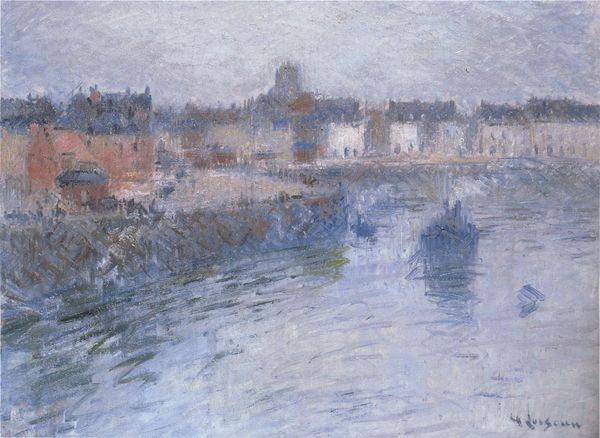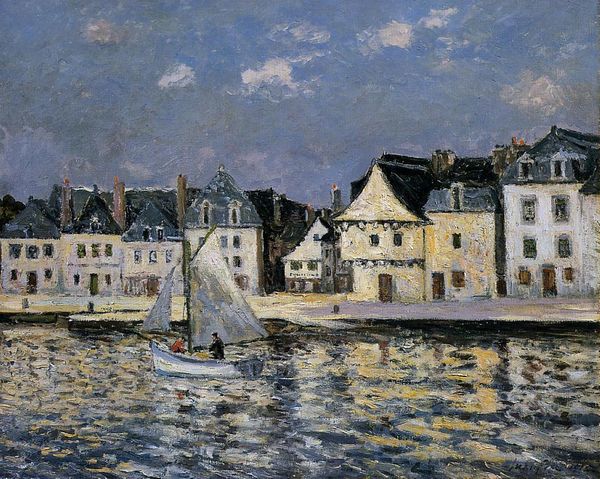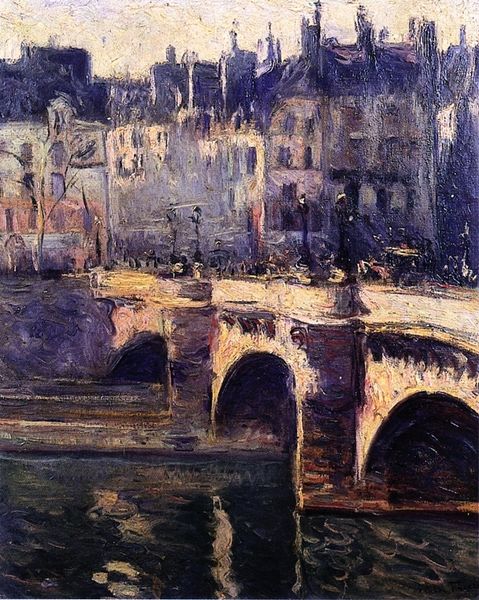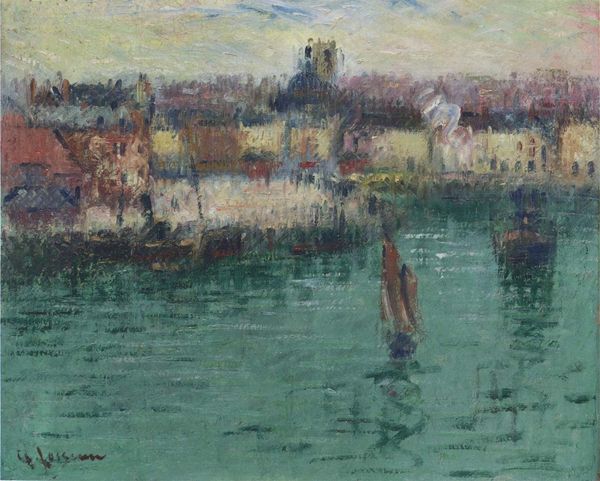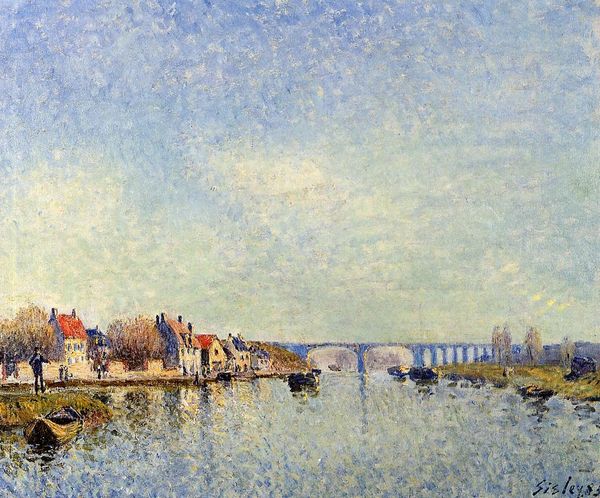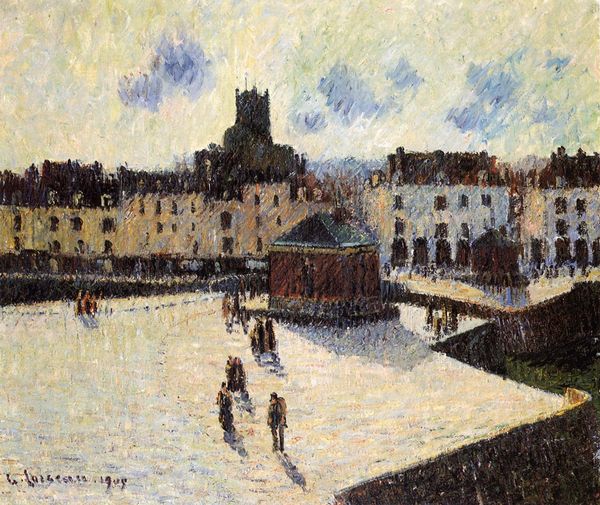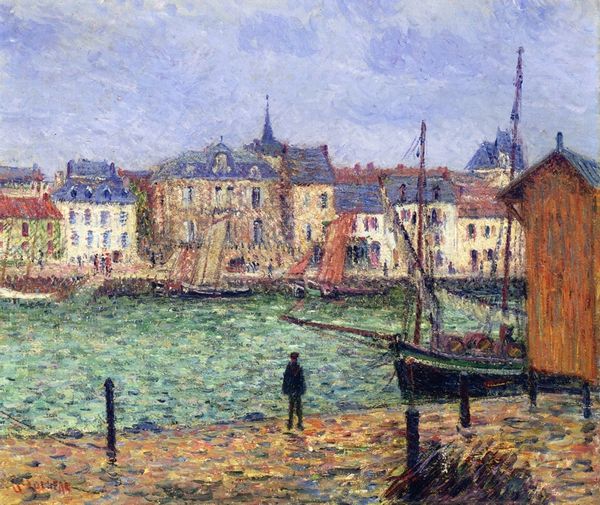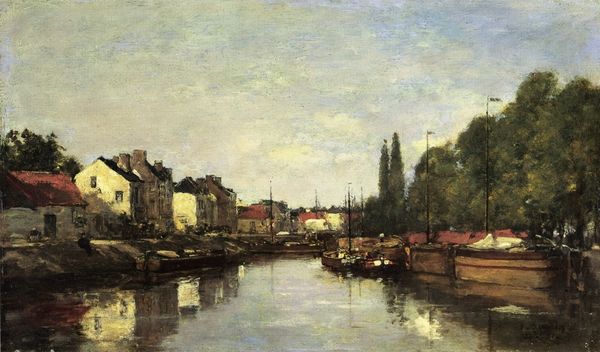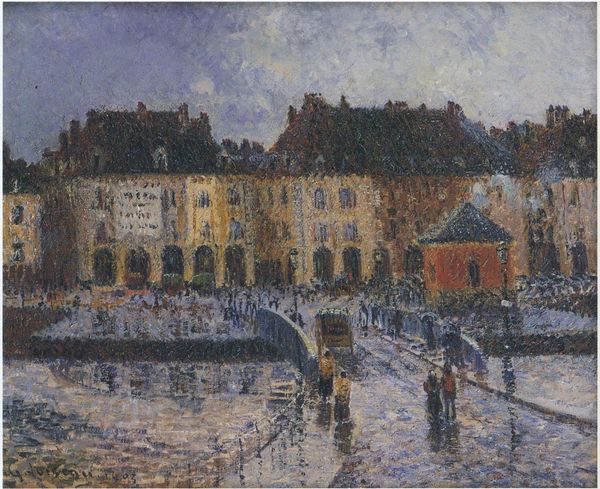
Copyright: Public domain US
Curator: There’s a melancholic mood hanging over this piece; it’s beautiful but feels shadowed by something. Editor: This is Raoul Dufy’s "Pier of Le Havre in the Evening," painted in 1901. The painting presents a scene from the French port city, executed in the plein-air, Impressionist style, capturing the urban landscape along the waterfront. Curator: Yes, you immediately notice how the water reflects the city lights, but it's the heavy darkness that truly characterizes the atmosphere. Dufy uses strong contrasts – bright windows against inky buildings, light-streaked water mirroring the dark sky – creating an image that’s almost theatrical. Editor: These luministic choices and the use of plein-air certainly tie the artwork to a broader political conversation. Impressionism, born out of a rejection of academic art and the rise of industrialization, tried to reflect lived realities. By depicting this port at dusk, Dufy not only captures the literal appearance but hints at a socio-economic narrative—the ships coming in and out, commerce, perhaps even the exploitation inherent in colonial trade passing through a city like Le Havre. Curator: I see your point about industrialization and trade. Symbolically, ports often represent transitions, departures, and arrivals. By painting it at dusk, Dufy amplifies a sense of quiet ending – a fading light which also serves as a cultural artifact marking France's evolution as a colonial power at that time. Editor: Exactly. And from that perspective, you could consider the illuminated windows—likely representing the middle and upper classes of society—set against the shadows of the port itself. There’s privilege made visible in the artificial lights and those shadows are the exploited classes that power it all, veiled but inescapable. Curator: A compelling idea; however, that melancholic atmosphere I felt is certainly amplified by such perspectives, considering light as something both attractive but exclusionary. Looking at the piece overall again now, you recognize it transcends an innocent pretty cityscape, evolving into an important commentary regarding labor, exploitation and capitalistic desires. Editor: I agree. This exercise showcases that understanding and acknowledging the historical and social contexts that influence art making reveals profound stories in otherwise deceptively peaceful compositions.
Comments
No comments
Be the first to comment and join the conversation on the ultimate creative platform.

